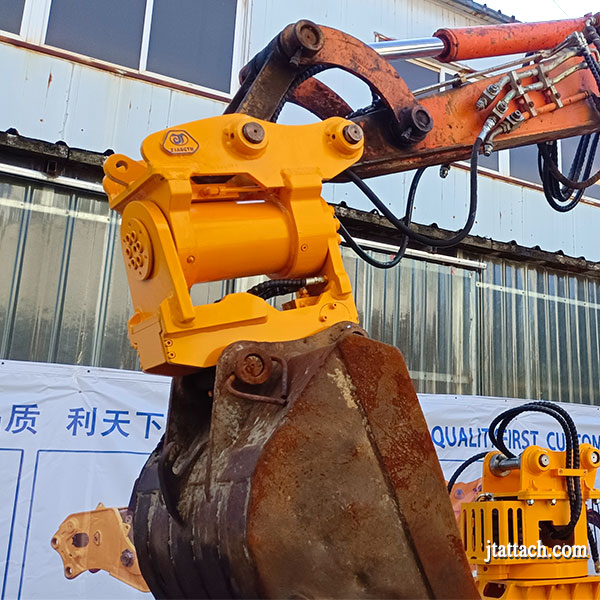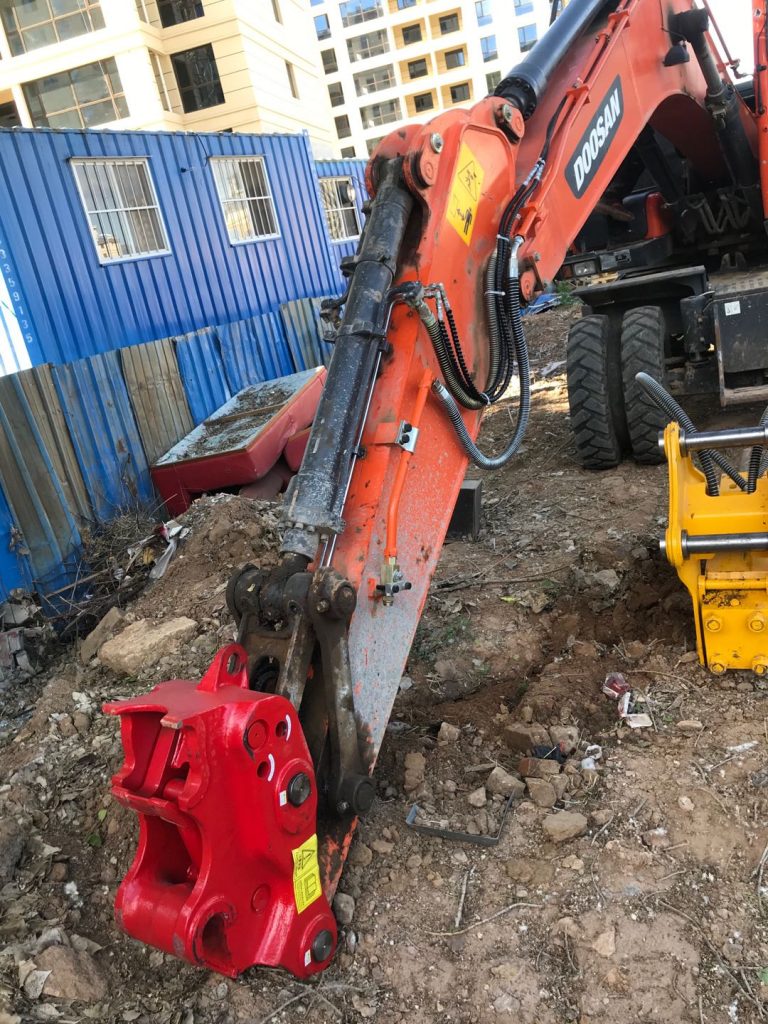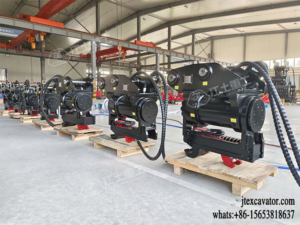Are you looking for the most efficient way to move earth or dig trenches? Look no further than an excavator bucket! But with so many types available, how do you choose the right one for your project? Fear not – this ultimate guide is here to help. We’ll explore the different types of excavator buckets and their applications, giving you all the knowledge you need to make an informed decision. So grab a hard hat and let’s get digging into this exciting topic!
General-Purpose Buckets
General-purpose buckets are the most versatile type of bucket and can be used for a variety of tasks, from digging and loading material to grading and levelling. They come in a range of sizes to suit different excavators, and can be fitted with teeth or cutting edges for extra durability.
If you’re looking for an all-purpose bucket that can handle anything you throw at it, a general-purpose bucket is the way to go.

Clean-Up Buckets
Clean-Up Bucket The JIANGTU excavator clean-up bucket is also called the Ditch Cleaning bucket. It has no teeth and has a larger width. The cleaning up bucket is very suitable…
Heavy-Duty Buckets
Heavy-duty excavator buckets are designed for tougher applications and are built to withstand the rigors of digging in challenging materials. Common features of heavy-duty buckets include thicker walls, reinforced teeth and cutting edges, and additional reinforcement around high-stress areas. When selecting a heavy-duty bucket for your excavator, it’s important to consider the type of material you’ll be digging in as well as the weight and size of your machine.
Rock Buckets
There are many different types of excavator buckets, each designed for a specific purpose. Rock buckets are one of the most common types of excavator buckets. They are used for digging in rocky or hard to reach places. The teeth on a rock bucket are very sharp and help to break up the rocks. Rock buckets can be used for both digging and loading rocks onto a truck.
Rock Bucket
JIANGTU excavator rock buckets are designed for extreme service applications, such as road construction, mining, and quarry applications. The entire bucket is made of Q460+Q355 material. The basic edge welds on the sections and the pins on the sidebar protectors are standard.
V-Shaped Buckets
V-Shaped Buckets are great for excavating in tight spaces. The V shape allows the bucket to get a good grip on material, while the pointed tip helps penetrate hard ground.
Skeleton Buckets
Skeleton buckets are a versatile attachment for excavators. They can be used for digging, trenching, and even material handling. While they are most commonly used for excavating, skeleton buckets can also be used for other applications such as trenching and material handling.
There are many different types of skeleton buckets available on the market, each designed for a specific application. For example, there are digging skeleton buckets which are ideal for excavating in tough conditions; while there are also utility skeleton buckets which offer a wide range of functions including digging, trenching and material handling.
When it comes to choosing the right skeleton bucket for your needs, it is important to consider the type of work you will be doing with it. If you only need a basic bucket for light duty work, then a utility skeleton bucket may be all you need. However, if you require a more heavy-duty bucket for tougher excavating conditions, then a digging skeleton bucket would be better suited to your needs.
Once you have considered the type of work you will be doing with your skeleton bucket and chosen the right one for your needs, it is important to ensure that it is properly attached to your excavator. This is essential to ensure that your bucket works correctly and doesn’t come loose during use.
Skeleton Bucket
JIANGTU Skeleton Bucket can effectively screen rocks, brushes, or other large debris while leaving soil and other backfills in place. It Can be set up to screen different sizes of material. It can reduce load waste while increasing the productivity and performance of the machine.
Additional Excavator Bucket Types
There are many different types of excavator buckets, each with its own unique purpose and application. Here is a list of some of the most common types of excavator buckets:
Skeleton or teeth bucket: These are the most common type of excavator bucket. They are used for digging and scooping up material, and can be outfitted with different types of teeth depending on the material being dug up.
Trenching bucket: As the name suggests, these buckets are designed for digging trenches. They have a narrow profile and curved bottom, which helps them cut through compacted soil more easily.
Ditching buckets: Similar to trenching buckets, ditching buckets are also designed for digging trenches; however, they have a flatter bottom that helps them move material out of the trench more easily.
Grading bucket: These buckets are usually wider than other types of excavator buckets and have a pointed front edge that helps with grading and levelling soil.
Clearing bucket: These buckets have a large capacity and are often used for clearing away debris or large rocks.
Excavator Bucket Teeth and Cutting Edges
Excavator bucket teeth and cutting edges are the two main types of excavator buckets. Each type has its own specific purpose and is best suited for different types of jobs.
Bucket teeth are the pointed, sharpened metal pieces that protrude from the front of the bucket. They are used to break up and dig into hard materials, such as concrete, rock, or frozen ground. Cutting edges are flat pieces of metal that are attached to the bottom of the bucket. They are used to cut through softer materials, such as dirt, sand, or snow.
Excavator Bucket Attachment Systems
There are two main types of excavator bucket attachment systems: quick coupler systems and pin-on systems. Quick coupler systems are faster and easier to change out, while pin-on system buckets tend to be more durable.
Both quick coupler and pin-on system excavator buckets have their own advantages and disadvantages, so it’s important to know which one is right for your needs before making a purchase.\
Quick coupler system excavator buckets are best for applications where time is of the essence, such as when you need to switch between different types of buckets frequently. They’re also less likely to cause damage to your excavator since there’s no need to remove and reinstall the bucket each time you want to change it out.
However, quick coupler system excavator buckets can be more expensive than their pin-on counterparts, and they’re not always compatible with all types of excavators. Make sure to check compatibility before making a purchase.
Pin-on system excavator buckets are ideal for applications where durability is key, such as in heavy-duty construction or demolition projects. They’re also typically less expensive than quick coupler system buckets.
However, pin-on system excavator buckets can take longer to change out than quick coupler system buckets, and they require that you remove and reinstall the bucket each time you want to switch it out. This can be time consuming and may cause damage to your excavator if not done
Conclusion
In conclusion, excavator buckets are a versatile tool that can be used for many tasks. They come in a wide variety of sizes and styles, allowing you to choose the best one for your specific project needs. By understanding the types of buckets available and their different applications, you’ll be able to maximize their effectiveness on any job site. With so much potential at your fingertips, there’s no better time than now to get an excavator bucket and start making jobs easier!
Contact For Our Expert
Find out which attachment & Excavator works best for you!














![[Major Upgrade]Million-level Spraying Production Line From JAINGTU Heavy Industry Has Officially Started Operation, Achieving New Level of Quality](https://jtexcavator.com/wp-content/uploads/2025/12/06-300x225.jpg)

